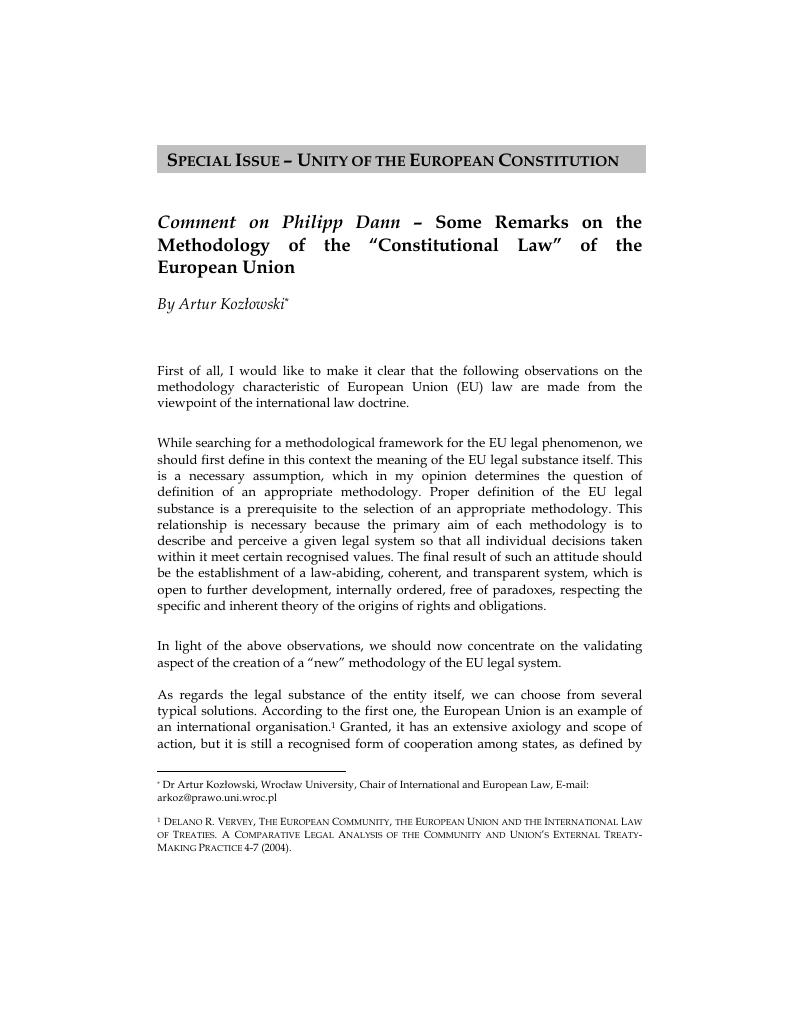No CrossRef data available.
Article contents
Comment on Philipp Dann – Some Remarks on the Methodology of the “Constitutional Law” of the European Union
Published online by Cambridge University Press: 06 March 2019
Abstract

- Type
- Part I: General Questions
- Information
- German Law Journal , Volume 6 , Issue 11: The Unity of the European Constitution: 2nd German-Polish Seminar on the Constitutional Law of the European Union , 01 November 2005 , pp. 1475 - 1478
- Copyright
- Copyright © 2005 by German Law Journal GbR
References
1 Vervey, Delano R., The European Community, the European Union and the International Law of Treaties. A Comparative Legal Analysis of the Community and Union's External Treaty-Making Practice 4-7 (2004).Google Scholar
2 Klabbers, Jan, An Introduction to International Institutional Law 14 (2002).Google Scholar
3 This view is usually negated in the doctrine but is ideologically popular. See Oppermann, Thomas, Europarecht 336-342 (1999); Łazowski, A. & Ostrihansky, R., Prawo instytucjonalne Unii Europejskiej 34 (2004); Jan Barcz, Charakter prawny i struktura Unii Europejskiej- Pojęcie prawa Unii, in Prawo Unii Europejskiej- Zagadnienia systemowe 51, 70-72 (Jan Barcz ed., 2003).Google Scholar
4 That means a form of cooperation independent from distinction into primary and secondary systems or present in the form of a derivative legal order.Google Scholar
5 See Report of the Study Group on Fragmentation of International Law: Difficulties Arising from the Diversification and Expansion of International Law, ILC, 56th Session, A/CN.4/L.663/Rev. 1, item 23.Google Scholar
6 This concerns the kind of dispute which the parties (member states and the organisation) cannot resolve in the spirit of compromise invoking the idea of “Community”. Regarding this concept, see MacCormick, Neil, Democracy, Subsidiarity, and Citizenship in the “European Commonwealth,” in Constructing Legal Systems: “European Union“ in Legal Theory 332, 339 (Neil MacCormick ed., 1997) and Stanisław Kaźmierczyk, Założenia o refleksjach nad teorią prawa europejskiego, in Teoria prawa europejskiego 19, 28-30 (Jacek Kaczor ed., 2005).Google Scholar
7 See MacCormick, , supra note 6, at 338-339.Google Scholar


